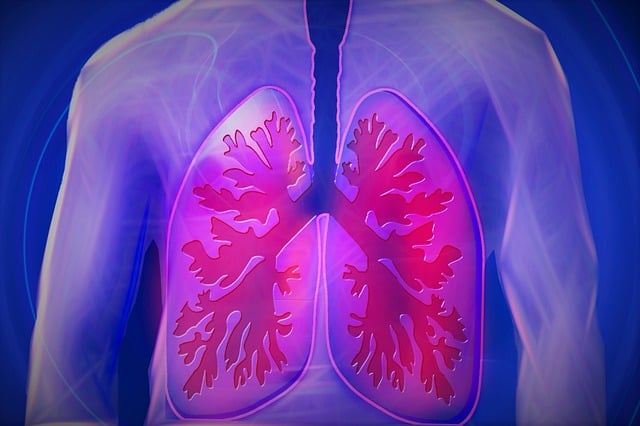What is COPD?
Chronic obstructive pulmonary disease (COPD) is a progressive lung disease that makes it difficult to breathe. It is a leading cause of morbidity and mortality worldwide, characterized by increasing breathlessness, wheezing, and chest tightness. COPD encompasses a group of conditions, including emphysema and chronic bronchitis, which lead to airflow obstruction and breathing difficulties. The primary cause of COPD is long-term exposure to irritating gases or particulate matter, most often from cigarette smoke. Other risk factors include exposure to indoor and outdoor air pollution, occupational dust and chemicals, and frequent lower respiratory infections during childhood.
The symptoms of COPD develop slowly and worsen over time, making it challenging for individuals to recognize the severity of the condition. Early diagnosis and intervention are crucial to managing COPD effectively. Common symptoms include coughing that produces large amounts of mucus, shortness of breath, especially during physical activities, wheezing, chest tightness, and frequent respiratory infections. As the disease progresses, individuals may experience weight loss, fatigue, and swelling in the ankles, feet, or legs.
COPD significantly impacts the quality of life and can lead to severe disability. It is essential for individuals experiencing any of these symptoms to seek medical attention for a proper diagnosis and treatment plan.
Understanding the ICD-10 codes for COPD
The International Classification of Diseases, Tenth Revision (ICD-10), is a system used by healthcare providers to classify and code all diagnoses, symptoms, and procedures. When it comes to COPD, accurate coding is essential for proper documentation, billing, and research purposes. The ICD-10 codes for COPD are crucial in identifying the specific type and severity of the condition, enabling healthcare professionals to deliver personalized and effective care.
ICD-10 codes provide a standardized way of documenting COPD in electronic health records and medical claims. These codes help in tracking the prevalence of COPD, evaluating treatment outcomes, and conducting research to improve management strategies. Furthermore, accurate coding ensures that healthcare providers and facilities are appropriately reimbursed for the services provided to COPD patients.
Understanding the nuances of COPD ICD-10 codes is vital for healthcare professionals, medical coders, and billing specialists. It allows for precise communication and classification of the disease, leading to improved patient care and better health outcomes.
Key differences between emphysema and COPD
Emphysema is a type of COPD, and while the two terms are often used interchangeably, there are distinct differences between them. COPD is an umbrella term that encompasses chronic bronchitis and emphysema, among other conditions, while emphysema is a specific form of COPD characterized by damage to the air sacs in the lungs.
COPD involves chronic inflammation of the airways, leading to limitations in airflow, whereas emphysema is characterized by the destruction of the alveoli, the tiny air sacs where oxygen and carbon dioxide exchange occurs. This structural damage in emphysema leads to poor airflow and difficulty in exhaling air from the lungs. Individuals with emphysema often experience shortness of breath and reduced tolerance for physical activity.
It is essential for healthcare professionals to differentiate between COPD and emphysema when diagnosing and treating patients. Accurate diagnosis facilitates tailored management strategies that address the specific characteristics and progression of the disease, leading to improved patient outcomes and quality of life.
COPD medication and treatment options
The management of COPD focuses on relieving symptoms, slowing the progression of the disease, improving exercise tolerance, and preventing and treating exacerbations. Medications play a crucial role in achieving these goals and are often prescribed based on the severity of the condition.
Bronchodilators are a primary class of medications used to relax the muscles around the airways, making breathing easier. They are available in short-acting and long-acting forms and are often administered through inhalers or nebulizers. Short-acting bronchodilators provide quick relief during sudden breathing difficulties, while long-acting bronchodilators help in preventing symptoms over an extended period.
Inhaled corticosteroids, often used in combination with bronchodilators, help reduce airway inflammation and prevent exacerbations in some individuals with COPD. Other medications, such as phosphodiesterase-4 inhibitors and antibiotics, may be prescribed to manage specific symptoms or complications associated with COPD.
Pulmonary rehabilitation, oxygen therapy, and surgical interventions, such as lung volume reduction surgery or lung transplant, are also part of the comprehensive treatment approach for advanced COPD. The management of COPD is personalized to each patient’s needs, considering the severity of the disease, presence of comorbidities, and individual response to medications.
Inhalers for COPD management
Inhalers are fundamental in the management of COPD, delivering medications directly to the lungs and airways, where they are needed. There are different types of inhalers available for COPD, each with specific techniques for proper administration. Understanding the various inhaler devices and their respective medications is essential for both patients and healthcare professionals to ensure optimal treatment outcomes.
Metered-dose inhalers (MDIs) are commonly used to deliver bronchodilators and corticosteroids. They require proper coordination between activating the inhaler and inhaling the medication, making patient education and training crucial for effective use. Dry powder inhalers (DPIs) and soft mist inhalers (SMIs) are other types of inhaler devices used in COPD management, each with unique mechanisms for delivering medications.
Inhaler technique and adherence are critical factors in achieving the desired therapeutic effects. Patients must be educated on the correct usage of their inhaler devices to maximize drug delivery to the lungs and minimize potential side effects. Healthcare providers should regularly assess and reinforce proper inhaler technique to optimize treatment outcomes and prevent exacerbations.
Coping with COPD exacerbations
COPD exacerbations, also known as flare-ups, are episodes of sudden worsening of symptoms, often triggered by respiratory infections or environmental factors. These exacerbations can be life-threatening and may require immediate medical attention. Individuals with COPD and their caregivers should be well-informed about recognizing and managing exacerbations to minimize their impact on overall health and well-being.
Early recognition of exacerbation symptoms, such as increased shortness of breath, change in sputum color or thickness, and chest tightness, is crucial for prompt intervention. Patients should have a personalized action plan developed with their healthcare providers that outlines steps to take during exacerbations, including adjustments in medication use, contact information for healthcare professionals, and when to seek emergency care.
Preventive measures, such as annual flu vaccinations and timely management of respiratory infections, can help reduce the risk of exacerbations. Additionally, lifestyle modifications, including smoking cessation, regular physical activity, and proper nutrition, play a vital role in preventing exacerbations and improving overall COPD management.
End-stage COPD and life expectancy
End-stage COPD, also referred to as stage 4 COPD, represents the most advanced and severe form of the disease. Individuals with end-stage COPD experience significant limitations in airflow, severe symptoms, and frequent exacerbations, leading to a substantial impact on their quality of life. It is essential for healthcare providers to recognize the unique challenges and care needs of patients with end-stage COPD to provide comprehensive support and symptom management.
The life expectancy of individuals with end-stage COPD varies based on several factors, including the presence of comorbidities, overall health status, and access to appropriate medical care. While COPD is a progressive and incurable disease, proactive symptom management, palliative care, and advanced directives can significantly improve the quality of life for individuals with end-stage COPD.
End-of-life discussions and advance care planning are essential components of care for individuals with end-stage COPD. These conversations allow patients to express their preferences for medical interventions, symptom management, and end-of-life care, ensuring that their wishes are respected and honored. Palliative care services provide holistic support to individuals with end-stage COPD, focusing on symptom control, emotional well-being, and enhancing overall quality of life.
Navigating COPD ICD-10 codes for accurate diagnosis
Accurate diagnosis and documentation of COPD using ICD-10 codes are vital for ensuring appropriate treatment, care coordination, and reimbursement. Specific codes within the ICD-10 classification system allow for the recognition of different types of COPD, severity levels, and any comorbidities that may impact the management of the condition.
Healthcare providers must meticulously review and document the patient’s medical history, symptoms, diagnostic tests, and imaging results to assign the most accurate ICD-10 codes. This detailed approach contributes to a comprehensive understanding of the patient’s COPD status, facilitating personalized treatment plans and effective disease management.
Medical coders and billing specialists play a crucial role in accurately translating clinical information into the appropriate ICD-10 codes for COPD. Their expertise ensures that healthcare facilities can effectively communicate the complexity and severity of COPD, resulting in accurate billing and reimbursement for the care provided.
Importance of accurate coding for COPD treatment
Accurate coding of COPD is essential for multiple aspects of healthcare delivery, including clinical decision-making, resource allocation, quality reporting, and research initiatives. The data derived from coded information on COPD prevalence, treatment patterns, and outcomes are instrumental in shaping public health policies and strategies for addressing the burden of the disease.
Accurate coding enables healthcare professionals to identify trends in COPD management, evaluate the effectiveness of interventions, and tailor care plans to individual patient needs. It also supports the development of targeted educational programs for patients and caregivers, promoting self-management and adherence to treatment regimens.
Furthermore, accurate coding ensures that healthcare facilities and providers are fairly compensated for the services they deliver to COPD patients. Proper documentation and coding lead to transparent billing practices and facilitate compliance with regulatory requirements, fostering trust and accountability within the healthcare system.
Conclusion
In conclusion, navigating the ICD-10 codes for COPD is essential for accurate diagnosis, personalized treatment, and effective disease management. Understanding the nuances of COPD, including its various forms, treatment options, and implications for end-stage care, is crucial for healthcare professionals, patients, and caregivers. Accurate coding of COPD not only supports clinical decision-making and resource allocation but also drives research initiatives and policy development to address the global burden of the disease.
As we continue to advance in the understanding and management of COPD, the importance of precise documentation and coding cannot be overstated. It is a collective responsibility of healthcare providers, medical coders, and billing specialists to ensure that COPD patients receive the comprehensive care they need and deserve. By accurately capturing the complexity and impact of COPD through ICD-10 coding, we contribute to improving the lives of individuals affected by this debilitating disease.
For more information on COPD diagnosis and management, consult with a healthcare professional to develop a personalized care plan tailored to your specific needs.



